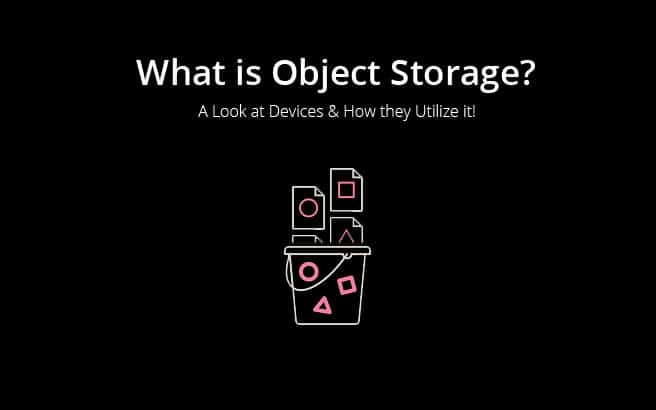Object Storage is a Data Storage infrastructure that manages Data as Objects and is used in many popular online services such as Spotify, Facebook, Dropbox and more!
Other storage infrastructures such as file systems that manages data as a file hierarchy and block storage that uses blocks within sectors and tracks to manage data.
Every Object usually includes the data itself, some amount of metadata, and a Globally Unique Identifier.
This type of storage product is used in multiple onlines services, as well as on-premises services including Network monitoring systems, SANs and MySQL Databases!
Object Storage Levels
Object storage can be deployed at multiple levels, including:
- Device level
- System level
- Interface level.
In each instance, Object storage help enable capabilities that are not addressed by other storage infrastructures, like an interfaces you can program via an Application, a Namespace that can cover several instances of Physical hardware, and mission critical tasks that include Data Replication and data distribution at object-level granularity make this a management benefit and strength!
Object storage systems gives users the ability to keep of Incredibly Large amounts of unstructured data and is responsible for hosting millions of songs, images, files from popular services such as Dropbox, Facebook.com and music streaming Services!
Object Storage vs. File Storage vs. Block Storage
Below we’ll break down what each type of storage does and how it functions!
Object Storage takes every Piece of data and appoints it as an Object. The Data is kept in segregated storehouses vs. files in folders and is lumped with its associated metadata and a unique identifier that forms what we call a Storage Pool.
File Storage, however, Stores Data and Information as a Single piece of information in a Directory (or Folder) to organize it amongst other information. Hierarchical storage is the term used for this which imitates the way that Paper files are stored. You will need know the Path to the Data/Information in order for the systems to find it and access that data.
Block storage breaks up files into Singular Blocks of Data and then subsequently stores the aforementioned data blocks as separate pieces of data. Each of these Data blocks is given an unique Address thus not needing a file structure to find it.
